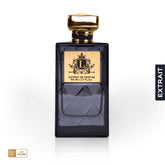Jasmine & Uses in Perfumes
Jasmine plant and its use in perfumes
One of the most sought-after, most loved, and most preferred notes of both women's and men's perfumes are undoubtedly Jasmine. Sweet Jasmine has been one of the perfume industry's favorites for centuries. Jasmine, which is used in modern perfumes as both a current and popular composition to add a mystical atmosphere to ceremonies in past periods, is powerful and effective.
Features of Jasmine Fragrance
Jasmine oil, the perfume industry's pupil, is derived from the tiny white flowers of jasmine bushes, which usually occur in Southeast Asia and South Asia. Jasmine, one of the most expensive oils when obtained naturally, is known as the king of oils for this reason. For Jasmine, it would be more accurate to say Queen, not king, because it is a very feminine scent alone.
Almost every perfume brand has a feminine scent of Jasmine in its collection, but this does not oblige Jasmine only to women's perfumes. Although Floral, the world's most popular men's fragrances, also contain notes of Jasmine. Only a small amount of flower oil can be significantly enhanced by base perfumes and aromatherapy mixtures.
The scent of Jasmine is incredibly sensual, rich, and sweet. More poetically, Jasmine can be described as intoxicating, exotic, and intense. Although floral scent, it also has an animal effect, explaining why it has long been considered an aphrodisiac. It is regarded as a perfume of love in Hindu and Muslim traditions. In aromatherapy, it is used to relax the body, remove emotional boundaries and feel happy.
Jasmine Perfumes
Jasmine flower is a simple white flower that is not very large. Its scent is floral, sweet, intense. It is a distinctive, attractive smell that is easily distinguishable when it is heard. Perfumes containing Jasmine may contain different types of plants.
The two most commonly used types are Jasmine and Spanish Jasmine. Jasmine is also known as Arab Jasmine. Spanish Jasmine is also known as French Jasmine. The plant's homeland is the Far East. Jasmine oil is one of the most widely used oils in the perfume industry. The term "king of oils" is used for jasmine oil. It is said that about 8000 jasmine flowers are required to obtain 1 gram of pure jasmine oil. It is suggested that the origin of the word Jasmine comes from the Persian word "Yasmine," which means "good smell."
Jasmine oil is also a widespread oil in aromatherapy. It is also often used in meditation to activate positive emotions, giving a person joy and happiness. Aromatherapy Jasmine baths provide relaxation and peace of mind. Below you can see the most well-known women's perfumes containing Jasmine.
Perfumes Containing Jasmine
- Calvin Klein Beauty: Jasmine, ambrette, Virginia cedar.
- Tom Ford Jasmin Rouge: notes of Jasmine, ylang-ylang, neroli, cinnamon, ginger, wood, vanilla, bergamot, amber, cardamom, black pepper, leather, Mandarin, French labdanum, mule, sage.
- Bvlgari Jasmin Noir: notes of green, almond, Gardenia, licorice, tonka beans, wood, musk, amber, patchouli, green.
- Thierry Mugler Alien Essence absolute: jasmine, vanilla, white amber, cashmere tree, myrrh, incense, Oris root.
- Thierry Mugler Alien: Jasmine, Wood notes, amber
- Yves Rocher Tendre Jasmin: Jasmine, mimosa, tangerine, lemon.
- Dior Pure Poison: Jasmine, orange blossom, Gardenia, sandalwood, orange, white amber, bergamot, cedar, Sicilian mandarin.
- Chanel Allure Eau de Parfum: Jasmine, peach, vanilla, Tangerine, bergamot, cedar, Magnolia, vetiver, rose, orange peony, lotus flower.
- Elie Saab Le Parfum: Jasmine, African orange blossom, white honey, patchouli, Virginia cedar, rose.

